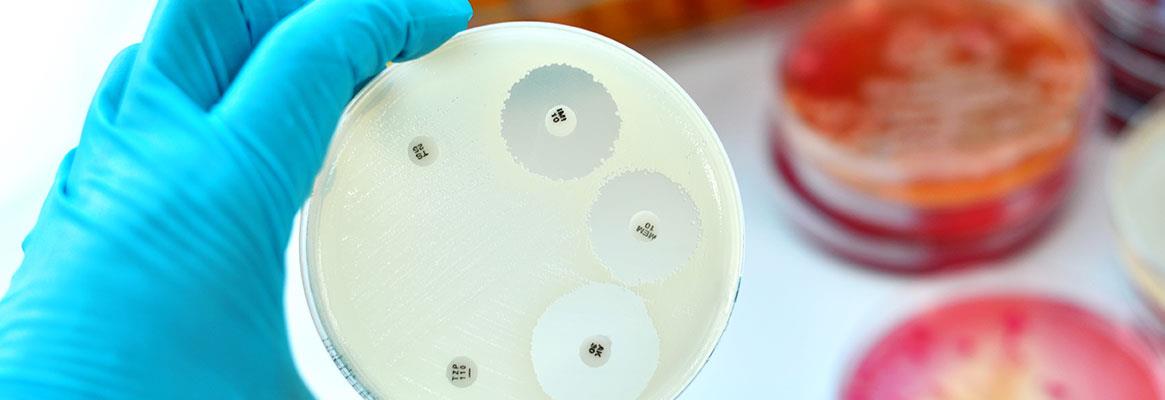The COVID-19 outbreak has shifted the entire globe's focus on health and hygiene. With an increase in the healthcare industry and increasing awareness about personal hygiene, the textile industry is all-ready to set a new bar for hygiene environment. The textile industry is embracing hygiene with antimicrobial fabrics.
2020 is the year where people are more concerned about their health & hygiene than ever before. - Click to tweet
The outbreak has really changed the way people consume textiles around the world.
According to a report by ResearchAndMarkets, the Antimicrobial textile market is expected to grow at a CAGR of over 4 percent during the forecast period of 2020 and 2025. The key industry players of the antimicrobial fibre industry are concentrated in the region of the US, Canada, and Mexico in North America. Over the years, Asia Pacific has emerged as one of the essential markets with the highest volume and value growth with all the technological advancements. The future of fabrics belongs to Antimicrobial textiles.
Also Read on: Asian Countries Take The Lead In Performance Apparel Market
In 2019, the global Antimicrobial Susceptibility test market was valued at approximately USD 3.0 billion and was anticipated to grow with more than 5.2 percent over the forecast period. The antimicrobial test can provide better health treatment to individuals dealing with complicated situations.
COVID-19 pandemic has increased the demand for antimicrobial textiles all over the world. And the market is undoubtedly going to boom in the coming years.
Here’s the market overview of antimicrobial fibre.
Market Forces
In recent years, antimicrobial fabrics have dominated the market due to growing awareness about health and hygiene. The antimicrobial fiber market is majorly driven by the rising demand for hygiene in various applications such as packaging, automotive
& transport, consumer goods, building & construction, food & beverages and medical and healthcare. During the forecast period, the pharmaceutical and healthcare industry is expected to be the largest consumers of antimicrobial fabrics.
The other major factor driving the growth of antimicrobial textiles is the increase in disposable income of consumers, along with improved lifestyle and higher spending on health & hygiene.
Apart from these two major forces, rising demand for antimicrobial sportswear and apparel is also responsible for driving antimicrobial textiles' growth.
Challenges
Along with the growth, antimicrobial industry players have a set of challenges too. Out of all the market challenges, the biggest one is strict environmental regulations on antimicrobial fibres made by hazardous chemicals.
Even though antimicrobial fabrics have several health benefits, and end-user products are more hygienic. But the dark side of antimicrobial fabrics is laced with antimicrobial chemicals. Many of these chemicals may pose a risk to the planet and, sometimes, health too.
Antimicrobial chemicals come in different compositions and so vary in properties. These chemicals are used on final products for finishing, which come in contact with skin and pose a risk to health.
Know more about Antimicrobial fabrics
Moreover, on washing, these products release antimicrobial agents such as triclosan, PHMB, QAC, and many others. These chemicals contaminate water bodies and ultimately risk aquatic life and so the environment. These chemicals can also make the land barren if settled in the soil and easily contaminate the land cultivation.
The biggest challenges for antimicrobial fabric manufacturers are overcoming the health and planet concerns about antimicrobial chemicals and making the industry health and environment friendly.
Restraint
The antimicrobial fabric of the market also depends on the price and availability of raw materials. These raw materials include cotton, which is treated with antimicrobial agents such as silver, zinc, copper, quaternary ammonium compounds (QACs).
The raw material prices fluctuate on a day-to-day basis depending on other market factors. And as a result, it may add to the already high cost of production. The cost can further affect the demands and supplies of antimicrobial textile in the market.
Opportunities
The antimicrobial textiles are gaining immense popularity in the researcher, manufacturers, and consumers. Consumers are demanding better quality products for higher safety and quality life.
The market researchers are continuously striving to develop skin-friendly, cost-effective, and eco-friendly products while manufacturers are in the race to differentiate their products by using different active agents or fabrics.
Both the continuous research and technological advances are creating massive growth in the antimicrobial fabric market.
Read More on: Antimicrobial Products in Textile Industry
Way Ahead
Currently, the Antimicrobial fabric is an emerging and developing market. In the forecasted period, the antimicrobial fabric market is expected to dominate the global textile market.
The high demand for antimicrobial fabric from the healthcare industry may boost the antimicrobial fabric market. An increase in the number of hospitals and raising awareness of personal hygiene are expected to be the enormous forces boost growth.











Comments